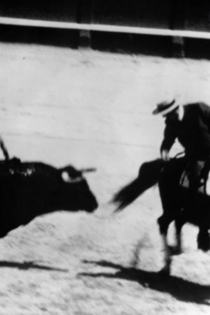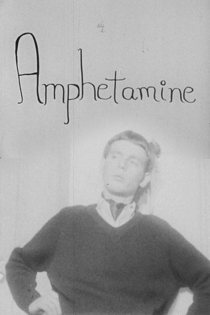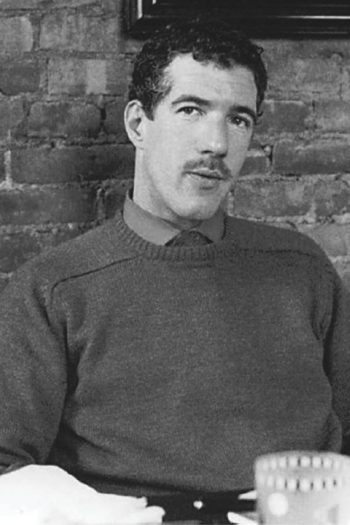
Warren Sonbert
1947 - 1995Noblesse Oblige
Warren Sonbert
The style is relatively unchanged, but the images--press conferences, news events, disasters--convey his vision of the world in a new, direct, political fashion. Featuring startling footage of the City Hall riots after Councilman Dan White received a light prison sentence for slaying San Francisco Mayor George Moscone and Supervisor Harvey Milk, Noblesse Oblige opens a new chapter on Sonbert's career. --David Ehrenstein, LA Reader
Noblesse Oblige
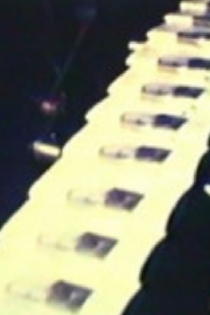
Friendly Witness
Warren Sonbert
In Friendly Witness, Sonbert returned, after 20 years, to sound. In the first section of the film, he deftly edits a swirling montage of images - suggestive of loves gained and love lost--to the tunes of four rock songs. Fred Camper said, "At times the words of the songs seem to relate directly to the images we see...; at other times words and images seem to be working almost at cross-purposes or relating only ironically. Similarly, at times the image rhythm and music rhythm appear to dance together, while at others they go their separate ways." -- Jon Gartenberg
Friendly Witness

Rude Awakening
Warren Sonbert
Sonbert's vivid color palette enhances the ritualistic nature of each action observed. Set against this lush panorama, Sonbert subverts the expectation of classic cinematography with a liberal sprinkling of avant-garde techniques. The incorporation of the materiality of film, the treatment of light, and the use of a hand-held camera, all suggest the influence of Stan Brakhage (Sonbert's "hero"). Sonbert's use of the shot as the foundation of his silent montage works parallels the use of the frame as the basic filmmaking unit in the films of Gregory Markopoulos (Sonbert's "mentor"). -- Jon Gartenberg
Rude Awakening

Hall of Mirrors
Warren Sonbert
Rene Ricard, Gerard Malanga
This film is an outgrowth of one of Sonbert's film classes at NYU, in which he was given outtakes from a Hollywood film photographed by Hal Mohr to re-edit into a narrative sequence. Adding to this found footage, Sonbert filmed Warhol's superstars Rene Ricard and Gerard Malanga in more private and reflective moments. -- Jon Gartenberg
Hall of Mirrors

The Bad and the Beautiful
Warren Sonbert
One of the most profound themes coursing throughout Sonbert's work is that of love between couples in all its pitfalls and perfect moments. To express this theme between his protagonists onscreen as well as in the relationship between his ever-roving hand-held camera and the human subjects in his field of vision, Sonbert employed diverse cinematic strategies, including in-camera editing (in The Bad and the Beautiful), twin-screen effects (in Ted and Jessica), and montage of discrete shots filmed in distinct spaces (in Honor and Obey). -- Jon Gartenberg
The Bad and the Beautiful
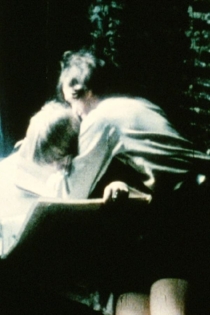
The Tenth Legion
Warren Sonbert
Following Sonbert's death in 1995, we recovered a 16mm reversal print of THE TENTH LEGION among the materials in the filmmaker's estate, which Sonbert had struck before disassembling it and recutting sections into CARRIAGE TRADE. -- Jon Gartenberg
The Tenth Legion

Truth Serum
Warren Sonbert
Truth Serum is a rare work by Sonbert made in New York City in 1967. The completed film (that is missing its original soundtrack) provides a unique glimpse into his life and friends at the time including fellow filmmakers Nathaniel Dorsky and Jerome Hiller.
Truth Serum

Where Did Our Love Go
Warren Sonbert
Gerard Malanga
Warhol Factory days... serendipity visits, Janis and Castelli and Bellevue glances... Malanga at work ... glances at Le Mépris and North by Northwest... girl rock groups and a disco opening... a romp through the Modern. My second film.
Where Did Our Love Go
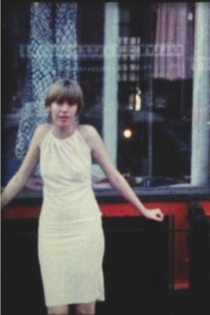
Divided Loyalties
Warren Sonbert
Nathaniel Dorsky, Jerome Hiler
Warren Sonbert described Divided Loyalties as a film 'about art vs. industry and their various crossovers.' According to film critic Amy Taubin, "There is a clear analogy between the filmmaker and the dancers, acrobats and skilled workers who make up so much of his subject matter." -- Jon Gartenberg
Divided Loyalties

Short Fuse
Warren Sonbert
Sonbert was also a noted opera critic, and he frequently theorized about the relationship of film to other art forms, in particular, music. He analogized the notes, chords, and tone clusters of music to the progression of shots in film. The shot was the building block upon which Sonbert created the musical rhythms of his films. Sonbert published excerpts from his feature-film screenplay adaptation of Strauss' Capriccio, his favorite opera, in 1986. Short Fuse, completed six years later, can be seen as a return to Capriccio's themes, including 'Nazism and eroticism, beauty and force, detail and structure.' (William Graves) Underscoring a question raised by Capriccio--whether in opera the music or the libretto takes priority--Short Fuse is replete with a soundtrack that counterpoints the film's visuals, prompting the viewer to ask whether the music or the imagery predominates. -- Jon Gartenberg
Short Fuse
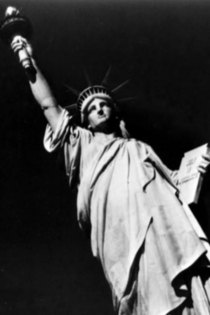
Carriage Trade
Warren Sonbert
Carriage Trade was an evolving work-in-progress, and this 61-minute version is the definitive form in which Sonbert realized it, preserved intact from the camera original. With Carriage Trade, Sonbert began to challenge the theories espoused by the great Soviet filmmakers of the 1920’s; he particularly disliked the “knee-jerk’ reaction produced by Eisenstein’s montage. In both lectures and writings about his own style of editing, Sonbert described Carriage Trade as “a jig-saw puzzle of postcards to produce varied displaced effects.” This approach, according to Sonbert, ultimately affords the viewer multi-faceted readings of the connections between individual shots. This occurs through the spectator’s assimilation of “the changing relations of the movement of objects, the gestures of figures, familiar worldwide icons, rituals and reactions, rhythm, spacing and density of images.”
Carriage Trade

Johnny Minotaur
Charles Henri Ford
Yiannis Koutsis, Nikos Koulizakis
Johnny Minotaur is a lyrical explosion of taboos: incest, intergenerational desire, pansexuality and autoeroticism are a few of the issues Charles Henri Ford grapples with through mythopoeic, sensual imagery, recitations of his diaries and a philosophical debate featuring an impressive narration by such artists as Salvador Dali, Allen Ginsberg, Warren Sonbert and Lynne Tillman.
Johnny Minotaur
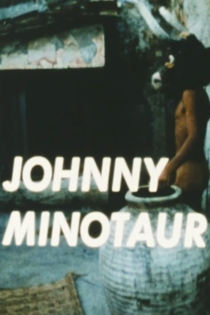
A Woman's Touch
Warren Sonbert
Sonbert was also a noted film critic, and his writings about feature films are among his more extraordinarily profound and insightful creations. In them, he expressed admiration for a pantheon of American directors working within the studio system, including Alfred Hitchcock, Nicholas Ray and Douglas Sirk. An indication of his enthusiasm for Hitchcock was his reputation for conducting tours for visiting friends, associates, and filmmakers of the locations around San Francisco used by Hitchcock while filming Vertigo (1958), and for signing his reviews under the pen-name Scotty Ferguson, the so-named protagonist of this renowned film. In 1986, Sonbert gave a lecture at the Pacific Film Archive, in which he spoke of the "schizophrenic split" in Marnie between "images of /en/closure and escape", representing the interplay between male domination and female independence. Sonbert paralleled these conceits in his own film, A Woman's Touch. -- Jon Gartenberg
A Woman's Touch
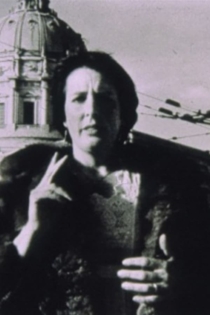
The Cup and the Lip
Warren Sonbert
The Cup and the Lip is a complex and challenging picture that will stimulate adventurous filmmakers for years to come. Although its imagery is too dense, varied and fast-moving to be thoroughly parsed after one viewing, the film appears to be a regretful and perhaps sardonic essay on human frailty--and on the effort to stave off chaos by means of political and religious institutions, which carry their own dangers of social control and mental manipulation. -- David Sterritt, Christian Science Monitor
The Cup and the Lip

Whiplash
Jeff Scher, Warren Sonbert
During the years preceeding his death, Sonbert channeled his energy into making Whiplash. His vision and motor skills impaired, he gave his companion, Ascension Serrano, detailed instructions about the assembly of specific shots and the music to be used as a counterpoint to the images. Before his death in 1995, he asked filmmaker Jeff Scher (a former student of Sonbert's at Bard) to complete the film. --Jon Gartenberg
Whiplash
